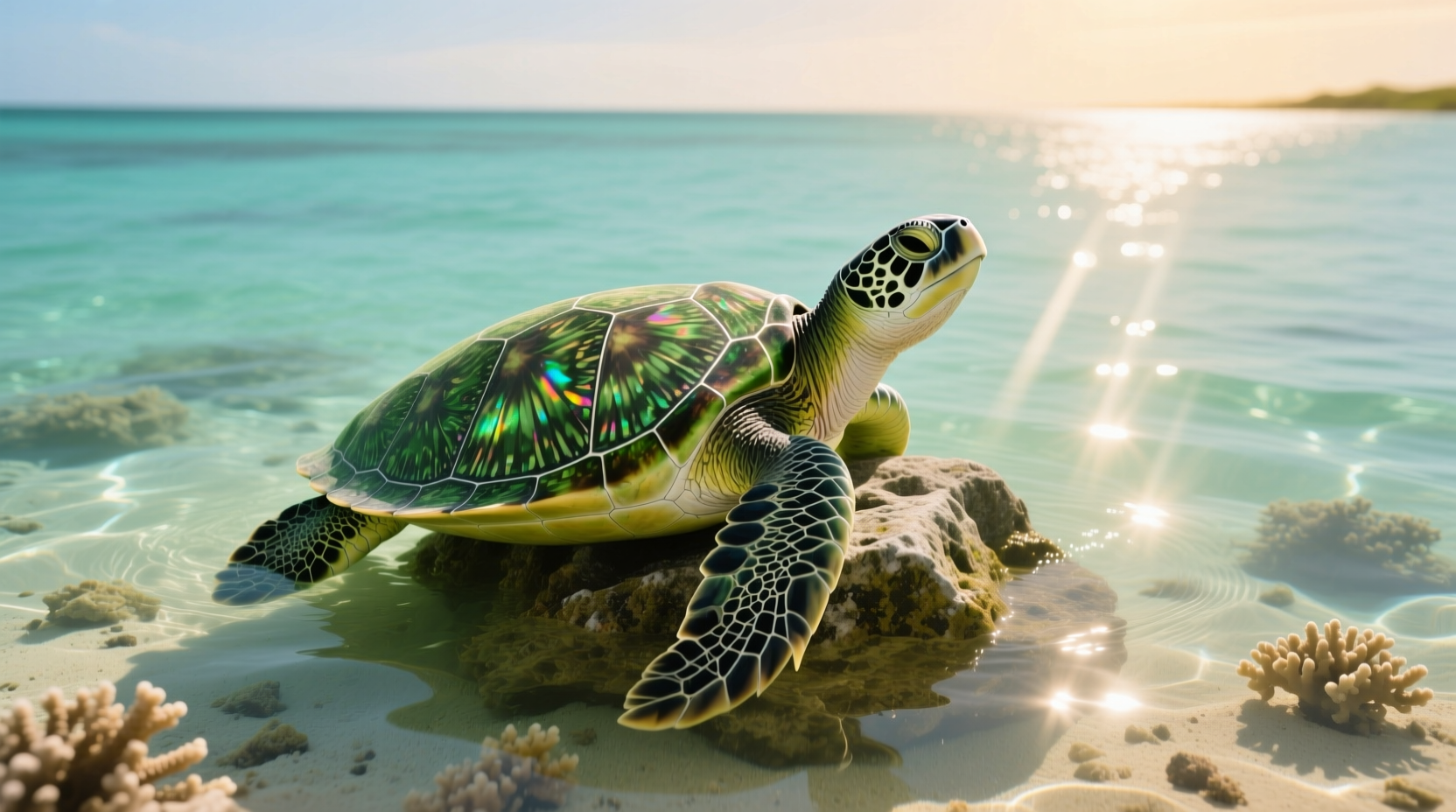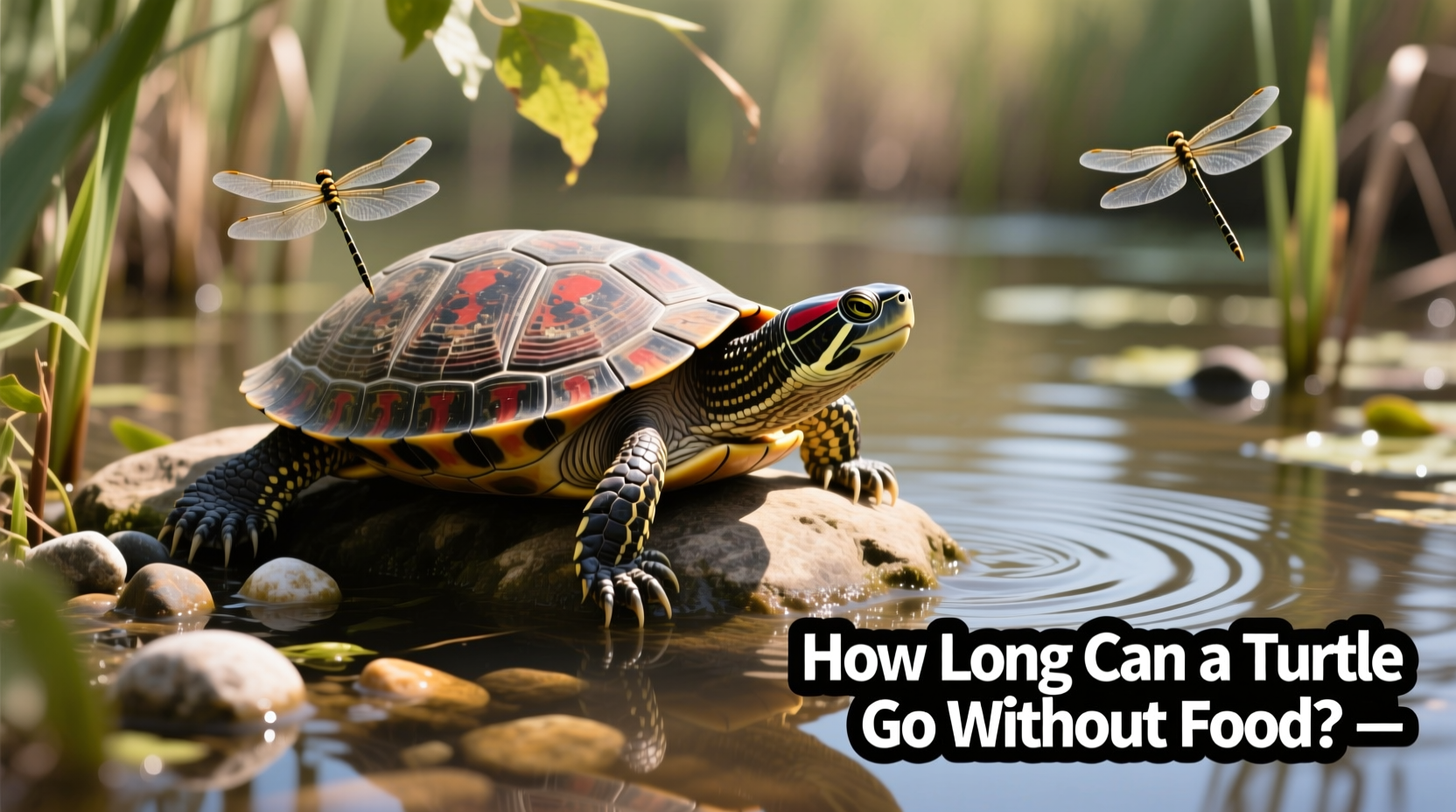The Science Behind Turtle Survival Without Food
Turtles possess remarkable biological adaptations that allow extended fasting periods. As ectothermic (cold-blooded) animals, they don't require constant energy input to maintain body temperature like mammals. During cooler months, their metabolism slows dramatically through a process called brumation—a hibernation-like state that conserves energy reserves.
When food becomes scarce, turtles efficiently utilize stored fat and protein from their liver and muscles. Their heart rate drops to just a few beats per minute, and they minimize movement to preserve precious energy. This physiological adaptation evolved to help them survive seasonal food shortages in the wild.
Species-Specific Survival Timelines
Not all turtles endure fasting equally. The duration varies considerably across species:
| Turtle Type | Maximum Fasting Period | Critical Notes |
|---|---|---|
| Box Turtles | 2-3 months | Require proper brumation conditions; shorter survival in warm environments |
| Red-Eared Sliders | 1-2 months | More vulnerable to dehydration; need consistent water access |
| Painted Turtles | 3+ months | Exceptional cold tolerance; can survive under ice in winter |
| Baby Turtles | 2-4 weeks | Higher metabolism requires more frequent feeding |
Four Critical Factors That Determine Survival Time
Several key elements dramatically impact how long your turtle can safely go without eating:
1. Temperature Conditions
Cooler temperatures (50-60°F) significantly extend survival time by slowing metabolism. In warm environments (above 75°F), turtles burn through energy reserves much faster—reducing survival time to just 4-6 weeks even for healthy adults. This explains why wild turtles naturally reduce activity during colder months.
2. Hydration Status
Water access proves more critical than food. Turtles can survive months without food but only days without water. Dehydration causes organ failure long before starvation. Aquatic turtles have an advantage here as they absorb water through their skin while swimming.
3. Health and Body Condition
Turtles with adequate fat reserves from previous feeding periods endure longer. The University of Illinois College of Veterinary Medicine notes that turtles with visible fat deposits behind their eyes generally have better fasting tolerance. Sick or underweight turtles may deteriorate within weeks.
4. Age and Developmental Stage
Baby turtles require regular feeding for proper shell development and growth. Their higher metabolic rate means they can't safely fast beyond 2-4 weeks. Adult turtles, particularly those entering natural brumation cycles, demonstrate much greater fasting resilience.
When Fasting Becomes Dangerous: Warning Signs
While turtles can survive extended periods without food, certain symptoms indicate serious health concerns requiring immediate veterinary attention:
- Significant weight loss (more than 10% of body weight)
- Shrunken eyes or sunken areas around the eyes
- Lethargy beyond normal brumation behavior
- Difficulty moving or swimming
- Shell abnormalities or softening
- Discharge from eyes, nose, or mouth
According to the Association of Reptilian and Amphibian Veterinarians, turtles showing these symptoms after just 3-4 weeks without eating need professional evaluation. Prolonged fasting without proper conditions leads to irreversible organ damage.
Practical Guidance for Turtle Owners
If your turtle stops eating, follow these evidence-based steps:
First, Assess the Situation
Determine if the fasting is natural or problematic. During fall and winter months, many turtle species naturally reduce feeding as temperatures drop—this is normal brumation preparation. However, if your turtle stops eating during warm months or shows concerning symptoms, investigate further.
Check Environmental Conditions
Verify proper temperature gradients in the enclosure (basking area 85-95°F, water 75-80°F for most aquatic species). Incorrect temperatures often cause appetite loss. Also ensure clean water, proper UVB lighting, and adequate hiding spots.
Safe Food Reintroduction Protocol
When reintroducing food after extended fasting:
- Start with small, frequent meals rather than large portions
- Offer highly palatable foods like earthworms or commercial turtle pellets
- Gradually increase portion sizes over 2-3 weeks
- Avoid high-fat foods initially to prevent digestive issues
Attempting to feed too much too soon can cause serious digestive complications. The Merck Veterinary Manual recommends a gradual reintroduction process to avoid refeeding syndrome.
When to Consult a Specialist
Seek veterinary care if:
- Your turtle hasn't eaten for 4+ weeks in warm conditions
- You notice any warning signs mentioned earlier
- Fasting continues beyond seasonal patterns
- Your turtle is a hatchling or shows stunted growth
Reptile veterinarians can perform diagnostic tests to identify underlying issues like respiratory infections, vitamin deficiencies, or parasitic infestations that may cause appetite loss.

Preventing Unnecessary Fasting Periods
While turtles can survive extended fasting, regular feeding remains essential for optimal health. Establish consistent feeding routines appropriate for your turtle's species and age. Most adult aquatic turtles need feeding every 2-3 days, while juveniles require daily meals. Provide balanced nutrition with appropriate calcium supplementation to prevent metabolic bone disease.
During winter months, if you maintain proper brumation conditions, reduced feeding aligns with natural cycles. However, never force brumation on pet turtles without proper preparation and monitoring—consult a reptile veterinarian before attempting this process.
Frequently Asked Questions
Can turtles die from not eating?
Yes, prolonged fasting without proper conditions can lead to organ failure and death. While healthy adult turtles can survive 2-3 months without food under ideal cool conditions, baby turtles may only last 2-4 weeks. Dehydration poses an even greater immediate risk than food deprivation.
How do I know if my turtle is fasting or sick?
Normal fasting during cooler months shows minimal activity but no physical deterioration. Warning signs of illness include sunken eyes, significant weight loss, lethargy beyond normal brumation behavior, and physical abnormalities. If your turtle stops eating during warm months or shows concerning symptoms, consult a reptile veterinarian.
Do turtles need to eat every day?
No, adult turtles don't require daily feeding. Most adult aquatic turtles need feeding every 2-3 days, while juveniles benefit from daily meals. During cooler months, their metabolism slows naturally, reducing feeding requirements. Overfeeding can cause health problems including obesity and shell deformities.
What happens if a turtle doesn't eat for a month?
A healthy adult turtle in cool conditions (50-60°F) can typically withstand one month without food with minimal impact. However, in warm environments, one month without food may cause significant weight loss and health deterioration. Baby turtles and sick turtles may develop serious complications within 3-4 weeks. Always monitor for warning signs like sunken eyes or lethargy.
How long can baby turtles go without food?
Baby turtles have much higher metabolic needs and can typically only survive 2-4 weeks without food. Their rapid growth requires consistent nutrition for proper shell development. Unlike adults, hatchlings cannot safely enter brumation and need regular feeding year-round. If a baby turtle stops eating, consult a reptile veterinarian promptly.











 浙公网安备
33010002000092号
浙公网安备
33010002000092号 浙B2-20120091-4
浙B2-20120091-4